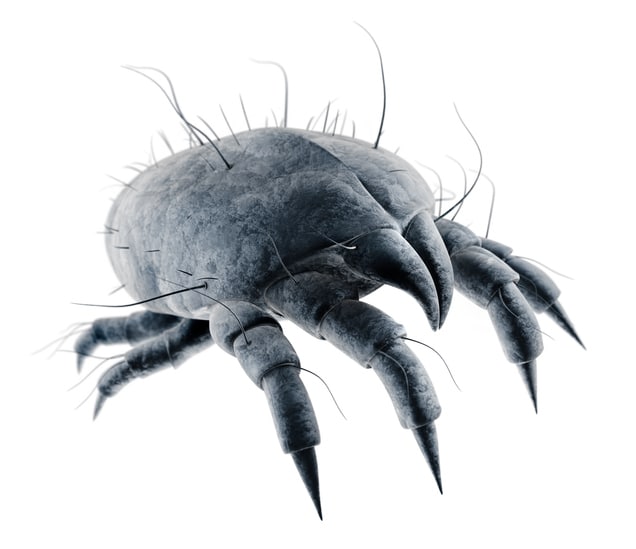What Is a Dust Mite?

Dust mites are part of the arachnid family. They have eight legs, bulbous bodies, and tiny hairs extending from their legs and bodies. Dust mites are microscopic at just .2 to .3 millimeters, which is about the size of a grain of salt.
How Do Dust Mites Cause Allergies?
You might think dust mites would eat dust based on their namesake, but their primary diet consists of human and pet dander. It provides them with a plentiful source of protein, often supplemented by pollen and mold.
It’s not actually the dust mites themselves that cause an allergic reaction in people, it’s what they leave behind. According to the European Centre for Allergy Research Foundation (ECARF), dust mite droppings contain the proteins Der p1 and Der p2. These are known allergens.
Do Dust Mite Allergens Work Alone?
Unfortunately, dust mite allergens aren’t alone in their effect on the human body. Scientific studies have found that Der p1 reduces the body’s ability to produce tight junction proteins (TJP), these proteins help with epithelial, endothelial and myelinated cell integrity, and restrict the movement of other proteins and lipid movement between cell membranes.
What Does It Mean?
It means dust mite poop compromises the cellular barrier of skin cells, both inside and outside of the body. That can allow other pathogens and allergens to enter the body, producing a greater allergic reaction than Der p1 would on its own.
Quote: A study of 440 children in the Boston-metro area found an increased risk of asthma in children aged seven who were exposed to high levels of dust mite allergens.
Can You Prevent Dust Mites?
Although they can’t be eliminated, preventative measures can help reduce dust mite populations in the home. Because they’re most commonly found in the bedroom, focusing efforts there will likely yield the best results.
- Regularly wash bedding at temperatures above 140°F
- Use a mite-proof mattress cover
- Remove any soft furnishings in the bedroom
- Use dust-repelling curtains
Are Dust Mite Allergies Treatable?
Depending on the results of your allergy tests, if mite mitigation efforts aren’t enough, treatments include tablets that can block certain immune system chemicals and immunotherapy. Schedule an appointment with an allergist at Lakelands ENT to explore your options.